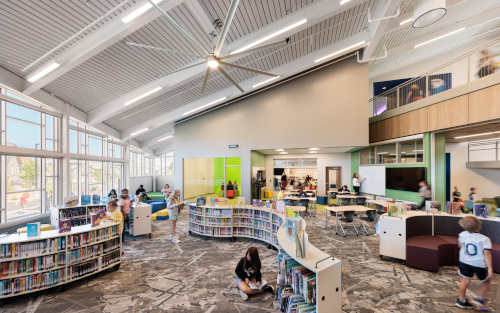
Inclusive Spaces: Child-Centered Classroom Design Excellence
The Essence of Child-Centered Classroom Design
Child-centered classroom design is the cornerstone of creating an environment that nurtures individuality, fosters a love for learning, and empowers students to take an active role in their education. Let’s delve into the key principles that make this design approach so impactful.
Putting Children at the Core of Design Choices
At the heart of child-centered classroom design is the acknowledgment that every child is unique. This approach prioritizes understanding each student’s needs, interests, and learning styles, influencing decisions on furniture, materials, and overall layout to cater to diverse requirements.
Flexibility for Varied Learning Styles
Child-centered classroom design emphasizes flexibility to accommodate various learning styles. Versatile spaces that allow for both independent exploration and collaborative activities empower students to choose environments that suit their preferences, enhancing engagement and promoting a more personalized learning experience.
Creating Comfortable and Inviting Spaces
A child-centric environment places importance on creating spaces that are comfortable and inviting. Soft seating areas, vibrant colors, and age-appropriate furnishings contribute to a welcoming atmosphere. Comfortable spaces encourage relaxation, making learning a more enjoyable and stress-free experience.
Fostering a Sense of Ownership
Child-centered design encourages a sense of ownership among students. Classrooms are arranged to promote student responsibility for their space. From arranging their workstations to contributing to the decoration of bulletin boards, this sense of ownership instills a feeling of pride and connection to the learning environment.
Supporting Individualized Learning Paths
Each child follows a unique learning journey, and child-centered classroom design supports individualized learning paths. The layout facilitates access to varied learning materials, allowing students to explore subjects at their own pace and delve deeper into areas of interest, fostering a lifelong love for learning.
Encouraging Collaboration and Social Interaction
While individualized learning is crucial, child-centered design also promotes collaboration and social interaction. Group workspaces, shared project areas, and comfortable seating arrangements facilitate teamwork, communication, and the development of essential social skills.
Promoting Inclusivity in Design Choices
Inclusivity is a key aspect of child-centered design. Classrooms are designed to be accessible to all students, regardless of physical abilities or learning differences. This approach ensures that every child feels valued and included, contributing to a positive and supportive learning community.
Integrating Technology Thoughtfully
Child-centered classrooms embrace technology as a tool for learning but do so thoughtfully. Integrating age-appropriate technology enhances educational experiences while ensuring a balance with hands-on, experiential learning. This approach prepares students for a technology-driven world without overshadowing other essential skills.
Nature-Inspired Elements for Connection
Connecting with nature is integral to child-centered classroom design. Incorporating natural elements, such as plants, sunlight, or nature-inspired artwork, creates a calming and inspiring atmosphere. These elements enhance well-being, focus, and connection to the world beyond the classroom walls.
Child-Centered Classroom Design for Lifelong Learning
Child-centered design principles extend beyond the classroom, shaping a child’s attitude towards learning for a lifetime. By exploring Child-Centered Classroom Design, educators and parents can gain valuable insights into creating environments that inspire, support, and empower children on their educational journey.
In conclusion, child-centered classroom design is a holistic approach that recognizes the uniqueness of each student. From flexible spaces to individualized learning paths and a focus on inclusivity, this design philosophy lays the foundation for a positive, empowering, and inclusive educational experience. Explore www.igaseng.com for in-depth resources on child-centered classroom design.

